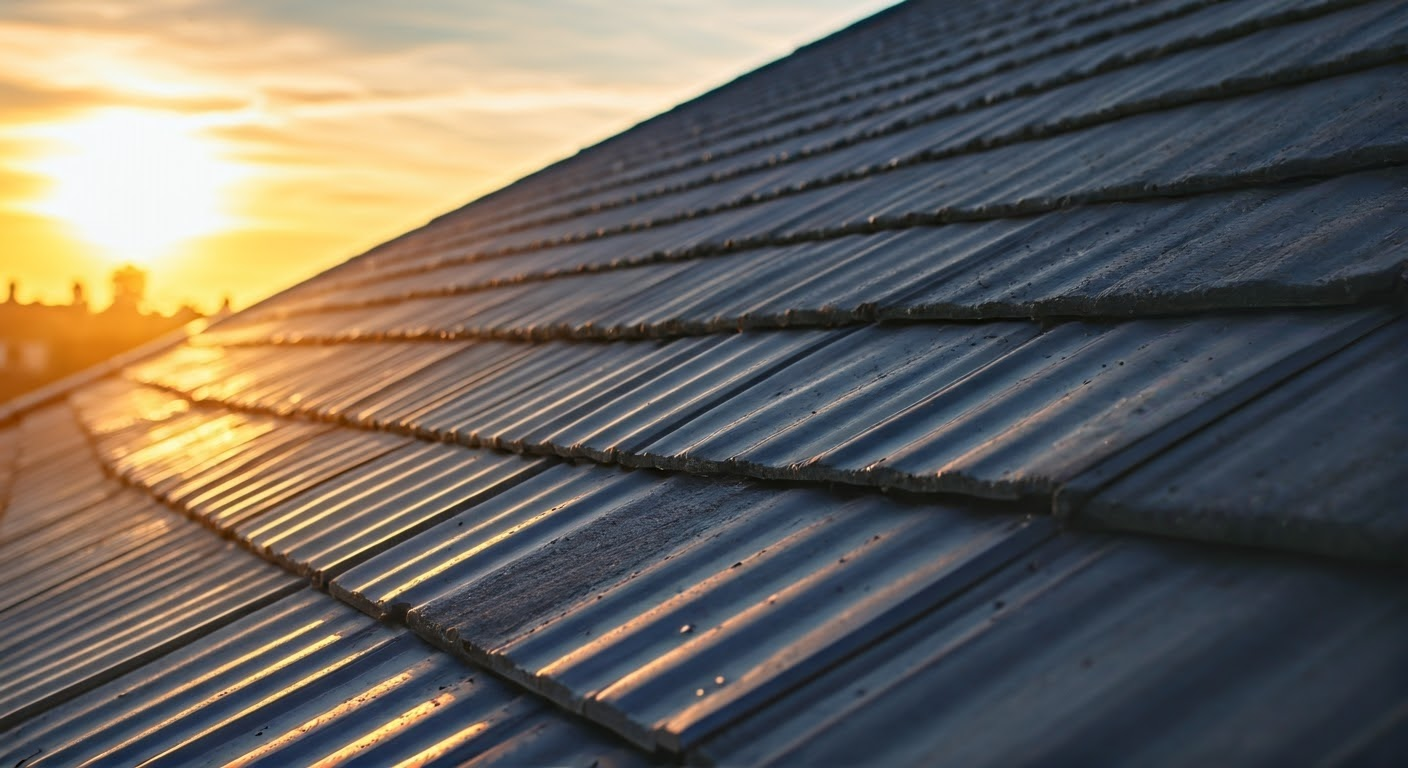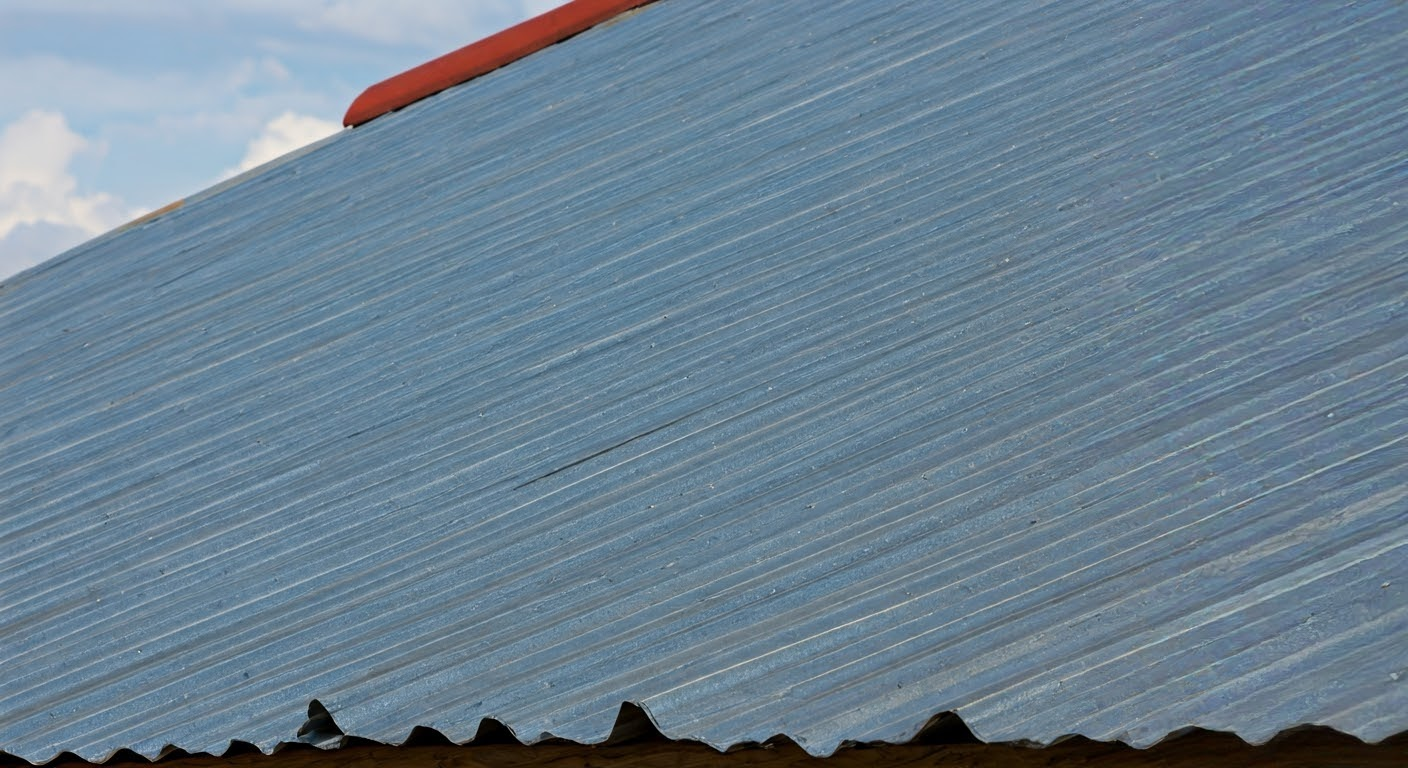
Key Highlights
- Flashing is a key component in metal roofing systems, preventing water damage and structural issues.
- Several types of flashing are available, such as ridge flashing, eaves flashing, and step flashing, each tailored to their specific purpose.
- Durability and compatibility with the roof material are crucial when selecting metal roof flashing.
- High-quality flashing extends the longevity of your roof and protects vulnerable areas like vents, chimneys, and intersections.
- Proper installation and maintenance ensure the flashing serves its waterproofing purpose effectively.
Introduction
A metal roof is an integral part of any roofing system, designed to provide durability and protection against the elements. One crucial component within this system is flashing, a thin metal material tasked with preventing water damage by redirecting water away from vulnerable roof areas. Without flashing, intersections, seams, and joints become susceptible to leaks, leading to costly repairs. Choosing the right flashing not only strengthens the roof’s waterproofing capabilities but also prolongs the lifespan and functionality of your roofing system.
Understanding the Role of Flashing in Metal Roofing
Flashing plays an essential role in defending a metal roof against moisture-related issues. Often made from metals like galvanized steel or aluminum, flashing bridges gaps between roofing materials to form a protective seal. This prevents water infiltration, which could damage the underlying layers of the roof.
Proper installation and maintenance of flashing help ensure the roof remains watertight. By shielding critical areas such as vents, chimneys, and intersections, flashing preserves the structural integrity of the roof while protecting your home from water damage.
Why Flashing is Essential for Waterproofing
When it comes to waterproofing, flashing is indispensable for preserving the structural health of your roofing system. It creates a reliable watertight seal that defends against water infiltration, stopping leaks before they have a chance to penetrate vulnerable roof areas.
Without flashing, water damage can quickly spread, causing deterioration in layers like insulation and underlayment. Over time, this can lead to rotten wood, mold growth, and weakened roof panels. Flashing ensures that critical intersections, seams, and roof edges stay dry, reducing repair costs and extending the roof’s longevity.
Moreover, flashing material is key to its effectiveness. Durable metals such as stainless steel and aluminum are widely preferred for their ability to resist corrosion. Whether it’s the peak, edges, valleys, or chimneys of your roof, flashing is your first line of defense against leaks and moisture-related problems.
Common Areas of a Metal Roof that Require Flashing
Metal roofs include several vulnerable areas where flashing is absolutely necessary. One such area is around chimneys, where chimney flashing prevents water penetration at the vertical junction between the chimney and roof surface. Chimney flashing creates a watertight barrier, stopping leaks caused by rain and snow.
Another key area is vent pipes, which require vent pipe flashing. This type of flashing seals the gaps around circular vent pipes, ensuring water doesn’t seep into the roofing system. Without proper flashing, water infiltration around vent pipes can lead to costly repairs.
Finally, flashing must be installed at roof valleys and intersections. Water typically follows the path downward, gathering at these vulnerable areas, which are more susceptible to leaks. Specialized flashing designs, such as step flashing or valley flashing, help channel water flow away safely while maintaining the overall protection of the roofing structure.
Types of Flashing Used in Metal Roofs

Selecting the right type of flashing depends on the specific requirements of the roof. Common options include ridge flashing, designed to protect the peak of the roof, and eaves flashing, which secures the edges against water. These flashing types are generally made from durable materials like galvanized steel or aluminum.
For intersections and vertical structures, step flashing and counter flashing are widely used. Each type of flashing serves a unique purpose in maintaining the roof’s waterproofing capabilities and enhancing its durability.
Ridge Flashing
Ridge flashing is essential for sealing the seams at the peak of a metal roof. Positioned along the roof’s highest point, this type of flashing prevents leaks by overlapping the roofing material on both sides of the ridge. It creates a watertight seal that stops moisture from seeping through exposed gaps.
Ridge flashing is available in various designs, including simple angled pieces or decorative versions to enhance the roof’s aesthetic. Some ridge flashings even incorporate vents for improved air circulation in the attic.
The importance of ridge flashing extends beyond waterproofing; it also plays a role in maintaining the roof’s structural stability and preventing weather-related damage over time. Proper materials like stainless steel or aluminum ensure the flashing remains rust-resistant, providing long-lasting protection against water intrusion and weather-induced wear.
Eaves Flashing
Located at the edge of the roof, eaves flashing plays a pivotal role in directing water flow away from the roofline. Its unique L-shaped design lets one leg extend over the fascia board while the other overlaps the roofing material, creating a protective barrier.
With eave flashing, moisture is prevented from reaching critical components like the fascia and soffit. These areas are prone to water damage if left exposed to rain or melted snow, which could lead to expensive replacements or renovations.
The effectiveness of eaves flashing largely depends on the choice of material. Galvanized steel or aluminum, for example, offers high resistance against corrosion and weather-related wear. Proper installation ensures that the flashing securely integrates with the roof system, stopping leaks at the lower edge of your metal roof and preserving its reliability.
Step Flashing
Step flashing is the go-to solution for protecting intersections where the roof meets vertical structures like walls. Crafted from thin metal material, it uses an overlapping method to prevent leaks in these crucial zones. Each piece of flashing alternates with roof shingles, creating a tight seal against water penetration.
The longer leg of its L-shaped design rests against the wall, while the shorter one overlaps the shingle below. This approach ensures consistent waterproofing at intersections, directing water away from vulnerable areas.
Step flashing is particularly useful for sloped roofs, as water naturally flows downward, gathering at the intersections. Using durable metals such as galvanized steel, aluminum, or copper enhances its corrosion resistance and longevity. Proper installation by professional roofers ensures a seamless fit that stops water infiltration and protects your roofing system from damage.
Selecting the Right Metal Flashing
Choosing the right metal flashing depends on the roof’s design, environment, and roofing material. Material considerations like resistance to corrosion and durability are critical in determining which flashing will suit your metal roof.
Additionally, the flashing type must align with the specific challenges of the roof, such as the need for ventilation or sealing vulnerable areas. Factoring in climate conditions and compatibility with metal roofing panels can significantly enhance its performance and aid in the long-term health of your roof.
Factors Influencing Flashing Choice: Material and Environment
The environment plays a significant role in determining the flashing material. For coastal areas, where salt content in the air can accelerate rust, materials like stainless steel and aluminum are preferred due to their corrosion resistance.
A major consideration is material durability. While galvanized steel suits most environments, copper offers an aesthetic element and lasts longer, up to 50 years in some cases. Below is a table summarizing material choices:
| Material | Durability | Best Use Cases |
|---|---|---|
| Stainless Steel | Highly resistant to rust | Coastal areas, high moisture |
| Galvanized Steel | Cost-effective, durable | General roofing applications |
| Aluminum | Lightweight, flexible | Complex roof intersections |
Balancing budget and environmental factors ensures a functional and long-lasting flashing.
Compatibility with Metal Roof Materials
Ensuring compatibility between flashing and the metal roofing material is vital for preventing corrosion. Some metals, such as copper, may react adversely with aluminum under certain conditions, leading to deterioration. Flashing must align with the properties of metal roofing panels to create a unified and durable roofing system.
Using non-corrosive fasteners and coatings further enhances compatibility. For example, stainless steel flashing can be paired with aluminum panels when a protective coating is applied to mitigate reactions.
Professional installation ensures that all materials work seamlessly together. Choosing the wrong flashing material may lead to structural vulnerabilities, so consulting experts familiar with metal roofing can help achieve a balance between longevity and effectiveness, ensuring your roof stays secure for years.
Conclusion
In conclusion, selecting the right flashing for your metal roof is crucial to ensuring its longevity and effectiveness in waterproofing. By understanding the various types of flashing—such as ridge, eaves, and step flashing—you can make informed decisions that align with your roofing needs and environmental conditions. The durability and compatibility of your chosen materials will significantly influence your roof’s performance and maintenance requirements. Remember, investing in quality flashing not only protects your home from leaks and damage but also enhances the overall lifespan of your roof. If you have more questions or need assistance with your metal roofing project, feel free to reach out for expert guidance!
At Metal Roof Mobile AL, we ensure our clients receive the best possible outcomes. Our commitment to quality workmanship and customer satisfaction is unwavering, making us the top choice for residential Roofing services in our community.
Frequently Asked Questions
What is the most durable material for metal roof flashing?
Among metal roof flashing materials, copper and stainless steel stand out for their durability and corrosion resistance. Copper, although premium-priced, can last up to 50 years. Stainless steel is particularly effective in harsh environments, including coastal areas, making it a reliable choice for enduring wear and tear.
